A child-friendly garden is a garden that both you and your child(ren) can enjoy. We understand that you might prefer a nice place to sit in the sun while your children are looking for a hiding or playing place in the garden. And what about safety? Can your children enter the garden safely? Depending on the needs of your family, you will have to consider this when creating your garden. We have developed the best garden tips for a child-friendly garden that makes everyone happy.
Organize creatively
Organizing your garden creatively can sometimes be a bit difficult. You want to create a cohesive whole where a moment of peace and conviviality can be found, but also a safe playground for your children.
You can organize creatively by thinking carefully about the garden style you want. Independent of the style, you then choose elements that should not be missing in the garden. Think of a nice place to sit and eat in the sun or shade, play area, hiding places or maybe even your own vegetable garden! When arranging these elements in your garden, it is important to create a natural flow. A nice sitting area in the sun surrounded by borders with greenery can of course also be a fantastic ‘home base’ for hide and seek.
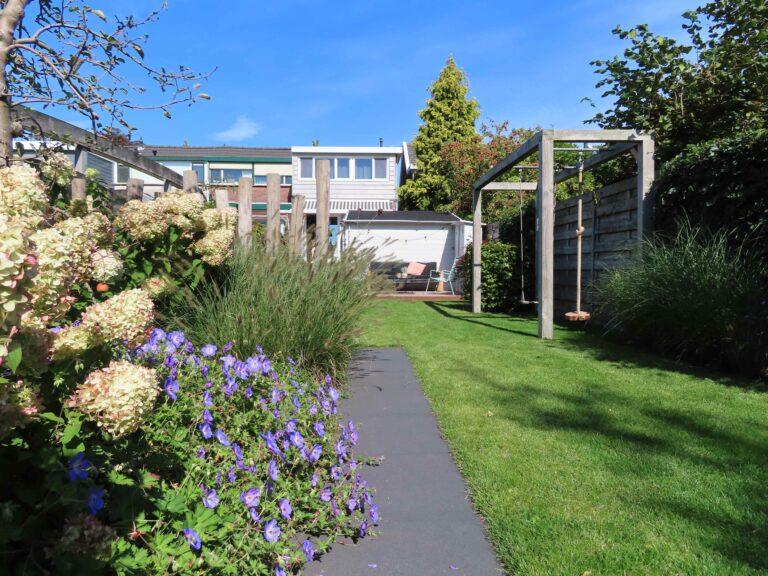
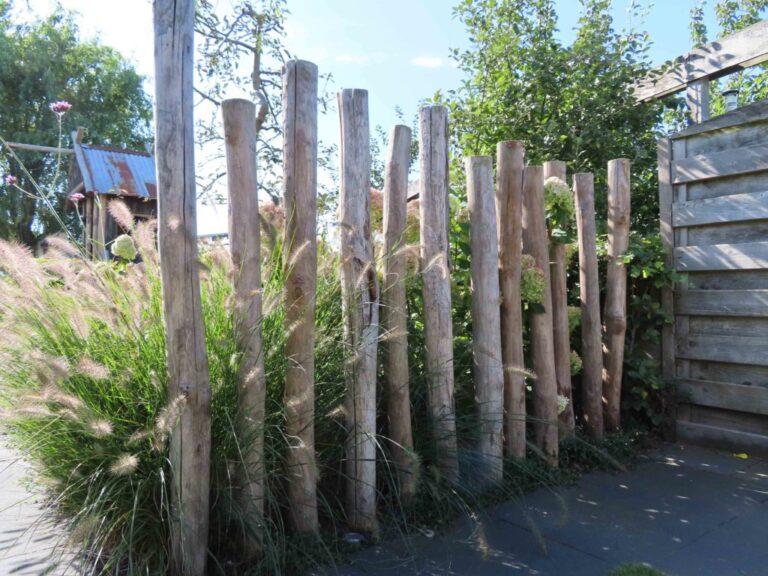
Flexible organization
If you have a smaller garden, it is good to make your seating area flexible. Choose a small table that can be extended. This way you can turn your seating area into a dining area without taking away the daily play area from the children. By using the space flexibly, you can also place several elements that do not remain in your garden all year round. This way you can put a swimming pool during the summer! Of course, your children’s play areas can be arranged flexibly. Think of a veranda with a swing hanging from it. A paved covering around the trampoline or the sandbox can also serve as a terrace!
Safety in your garden
Your yard should be a fun place where your kids can play freely without you having to worry about them! A lawn where the children’s toys are on is a nice idea. Are you fed up with grass stains or are you going for a different style in your garden? Use soft tiles or wood chips as a fall-absorbing solution. Of course you should always keep an eye on your children and know what is best for them.
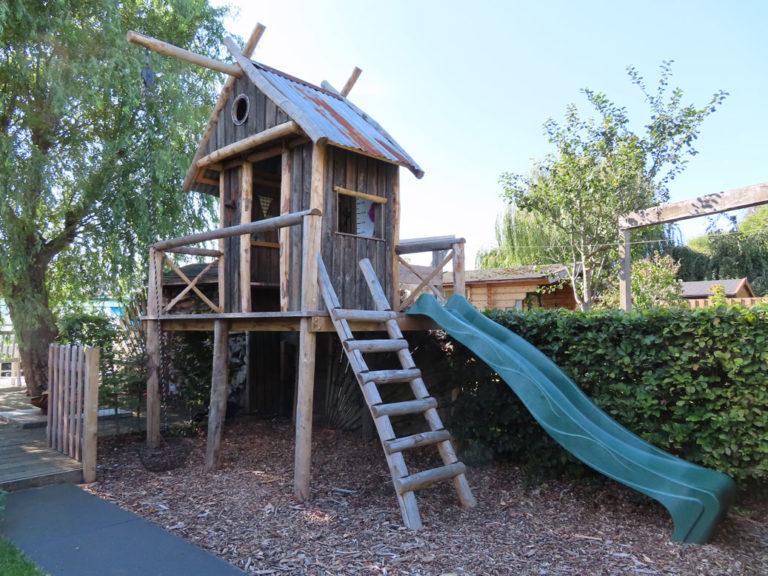
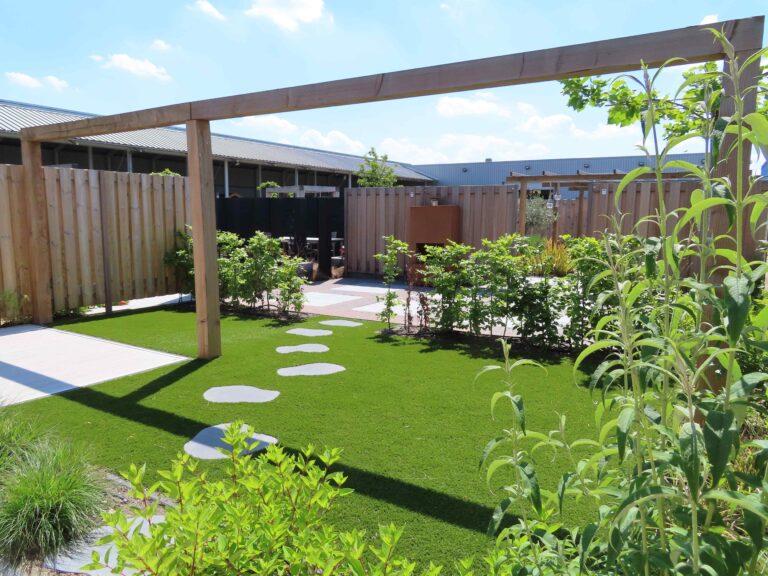
The Little Gardener
Make it easier for yourself by demanding the help of your kids for gardening jobs. We understand that you don’t let your toddler lay the tiles, that’s for sure not the intention! Make sure that your little ones understand what is happening. Especially with the care of the plants children might love to help. As a result, the young gardener develops important skills such as friendliness and a sense of responsibility. By planting a small vegetable garden with small fruit together with your child(ren), you teach them not only about gardening but also about the importance of patience. Training your child’s patience will have a positive effect on school. When your child learns how to keep patience, he or she can remain calm under tense situations such as a test. Above all: how much fun is it to cook jam from the fruits you have grown together with your children.
Safe green
Planting your garden without endangering your child and vice versa is not difficult. There are two rules for this. Choose strong plants and watch out for poisonous plants. By using strong plants you don’t have to worry about it much, so you have more time to enjoy your garden with your children. You also do not have to worry that your child(ren) will damage the plants while playing. Toxic plants in a garden with children can create dangerous situations. So make sure that you do not place poisonous plants in your garden. Do you want to do this though? Then use high borders and planters or make them inaccessible for children by placing other plants around them. Within our range we always indicate whether a plant is poisonous in the specifications.
Complete your child-friendly garden with strong greenery. Growing an empty fence with climbing plants quickly gives atmosphere. An overgrown fence at the back of your garden can also provide more privacy and make your garden appear larger! Borders with plants ensure that children are less likely to run over your plants. By using bee and/or butterfly-friendly plants you let your children learn even more about nature!
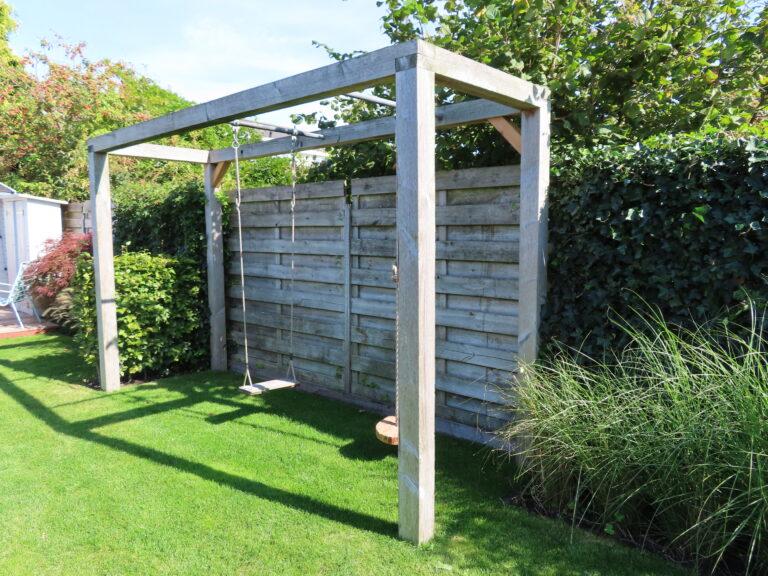
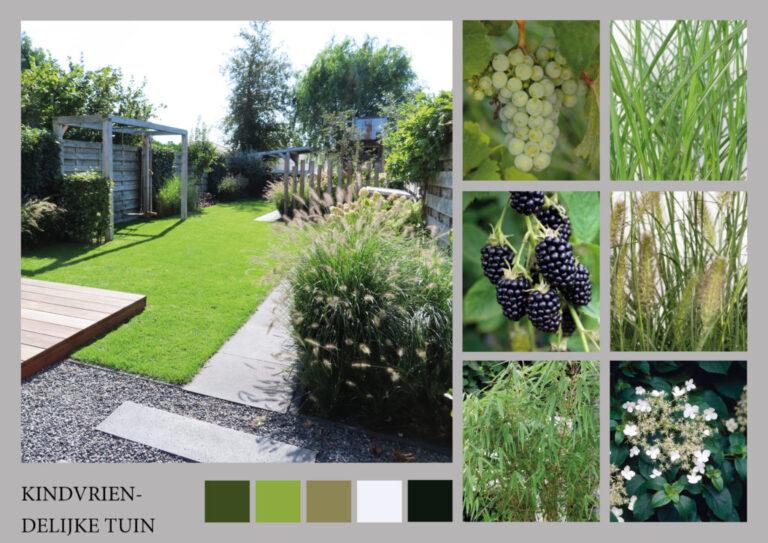
To help you on your way, we have listed a number of plants that are perfect for a child-friendly garden. This way you can get some inspiration before you get started with your own garden.
- Vitis ‘Lakemount’ (Inoculated) is a white seedless grape. Just like a real children’s garden should be, this plant species is also very flexible. The fruits are delicious to snack, but they are also suitable for making jam. juice or wine grapes. The fruits are greenish yellow in color, juicy and sweet. The Vitis loves sthe sun and grows and ripens best in a warm spot in your garden.
- Miscanthus sinensis ‘Gracilimus’ is also called the silvergrass. It is a sporadic bloomer from August to October with copper-colored flower panicles. This Miscanthus species is not only hardy but also drought tolerant and tolerates sea wind and air pollution. In addition, this variety with its bushy habit is good as a hiding place.
- Pennisetum alopecuroides ‘Hameln’ is a popular grass with a compact growth. The leaves are narrow, linear and green to dark green. This ornamental grass is also hardy, drought tolerant, tolerates sea wind and air pollution. You can use the plumes as cut flowers and put them in a vase in your house.
- Hydrangea Petiolaris has been one of the most popular climbing plants for many years. The climbing hydrangea is very easy to maintain and also does well in the shade. In addition, this climber has roots attached to the branches, so it needs little help or support. We can conclude that the Hydrangea needs little maintenance, which ensures that you can enjoy your garden more often with your entire family!
- Rubus Navaho® Summerlong® is a productive blackberry bush. The Rubus grows robustly upwards, with the branches becoming shorter. This makes the bramble sturdier, useful if one of the children bumps into it. The blackberry bush likes a sunny spot and has a long harvest period.
- Fargesia Rufa is a compact bamboo species. Unlike other bamboo species, the Rufa does not proliferate. The Fargesia is also hardy and gives atmosphere in your garden with the light green glossy leaves. By pruning the bamboo now and then, it will grow fuller and remain compact.
